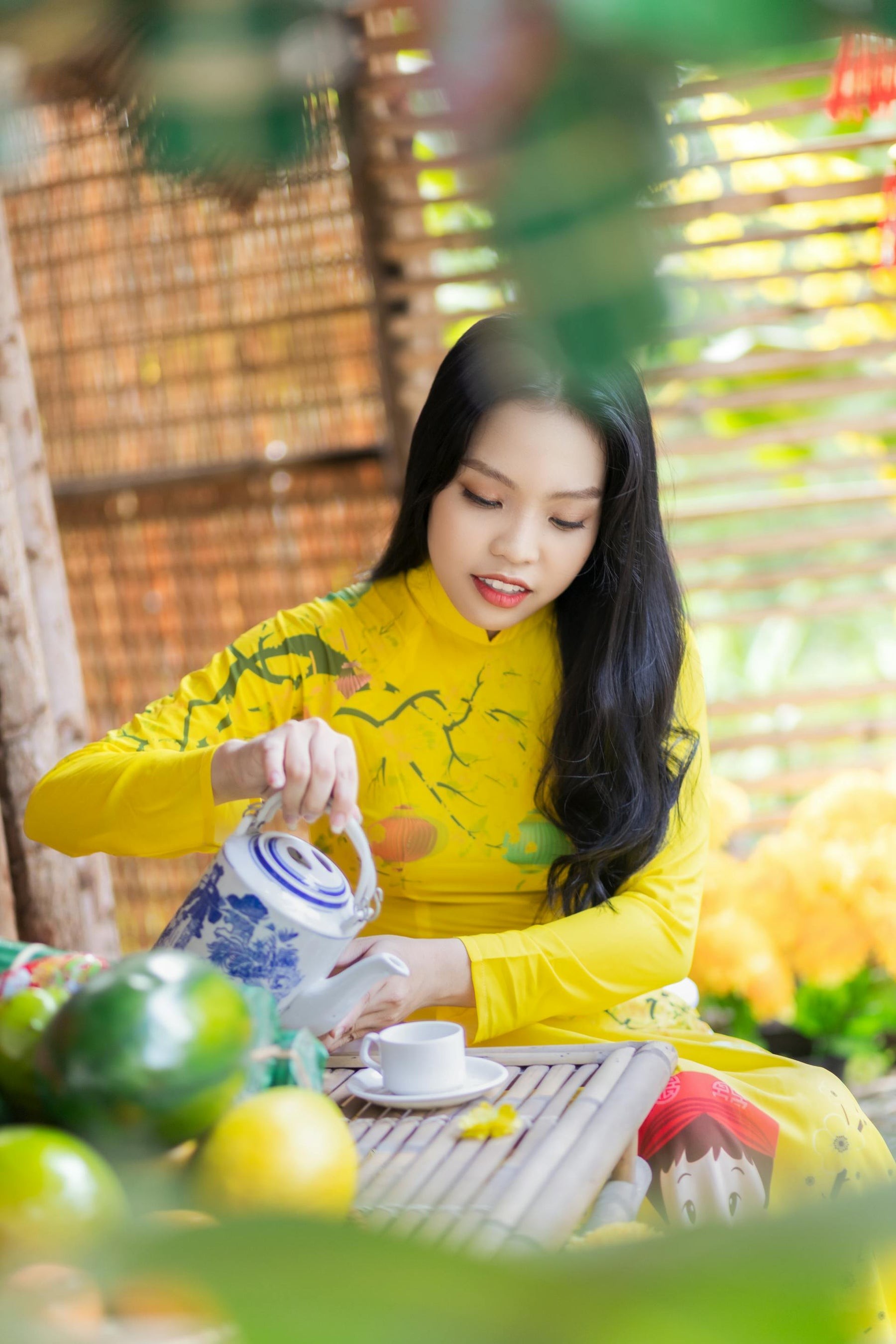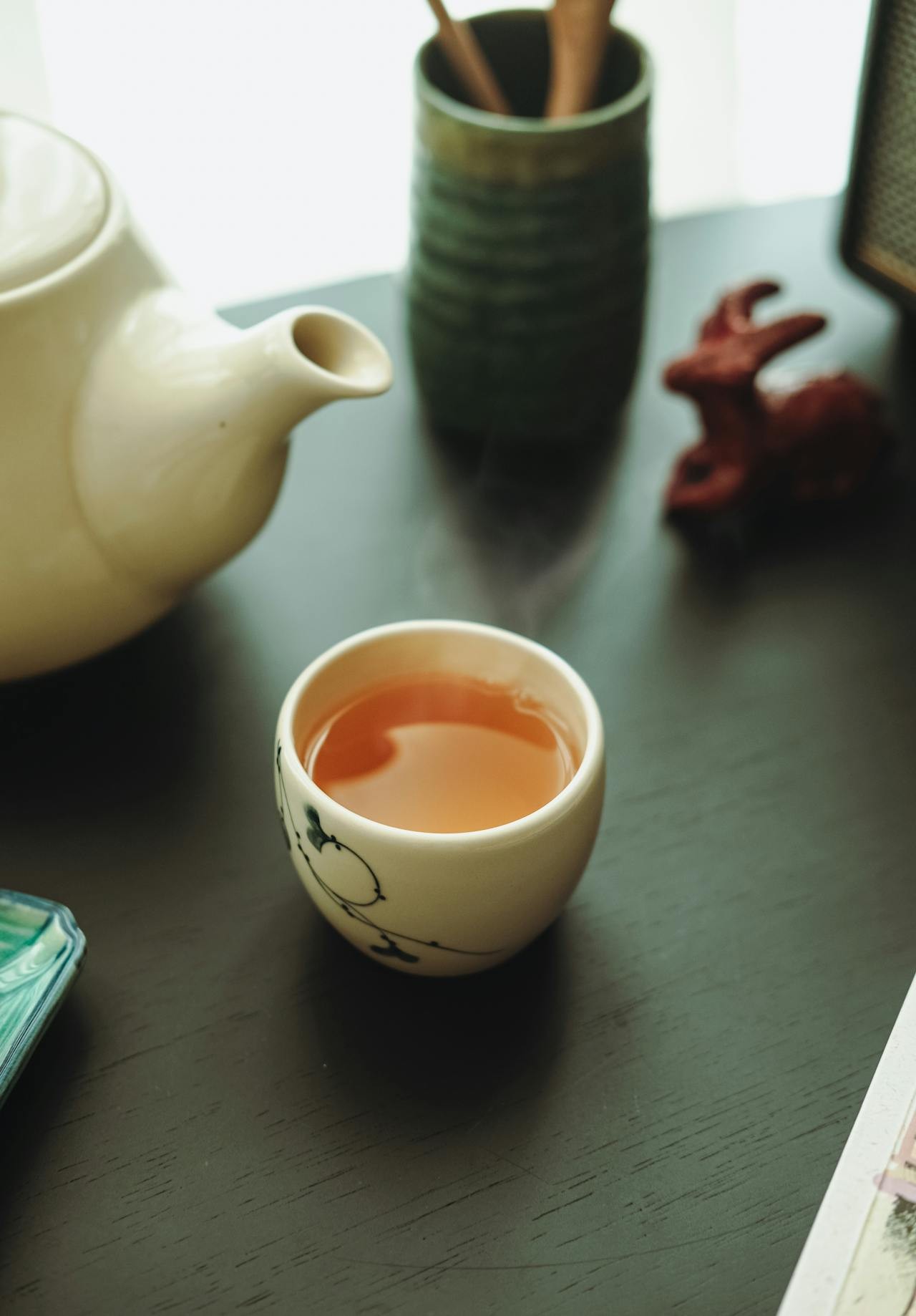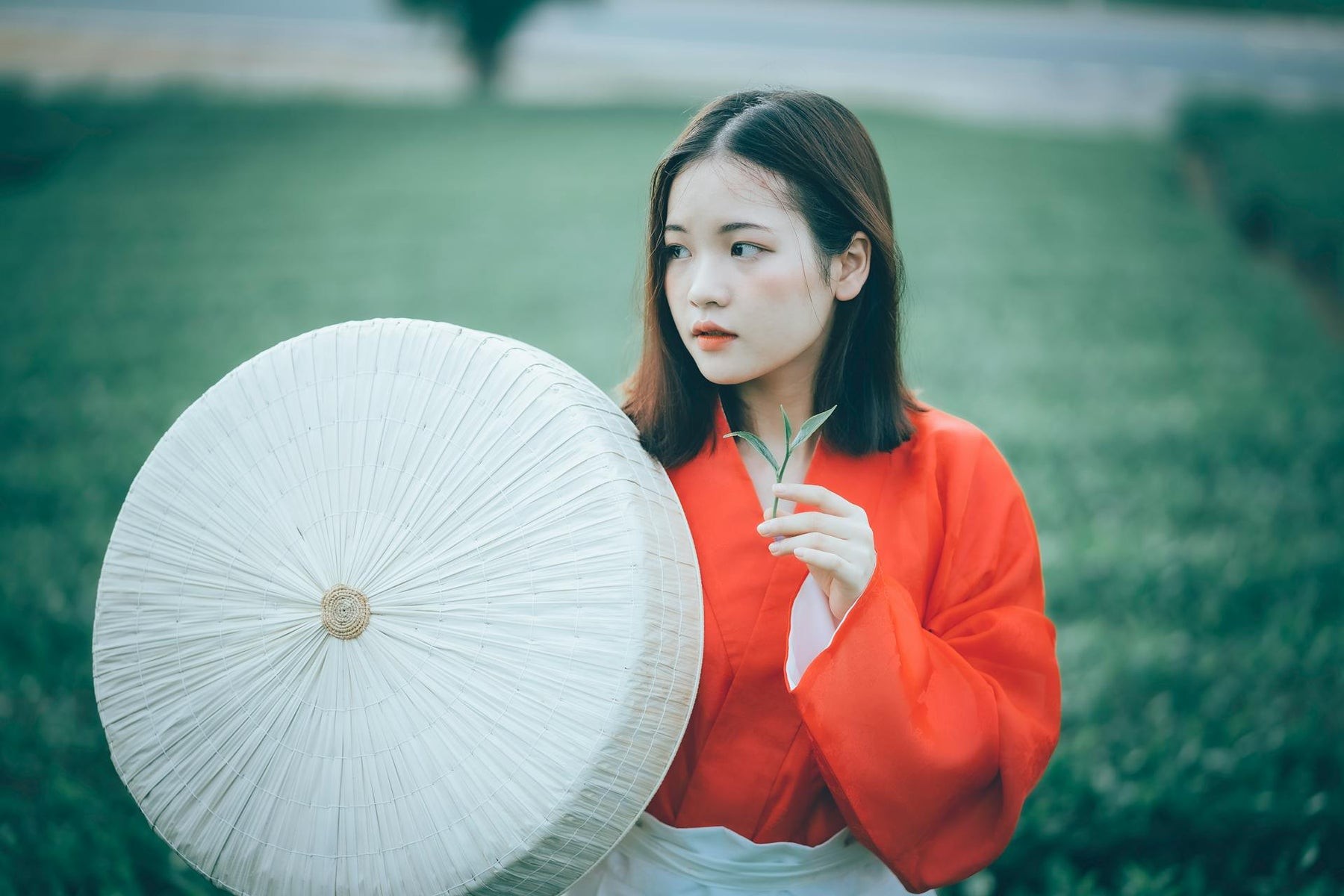Vietnamese tea is more than just a beverage; it’s an integral part of Vietnamese culture. Are you curious about the different types of Vietnamese tea and want to explore the rich tea heritage of Vietnam? At SIXT.VN, we’re dedicated to providing you with the most enriching travel experiences, and understanding Vietnamese tea culture is a delightful way to immerse yourself in the local traditions. Let’s embark on a journey to discover the diverse world of Vietnamese tea, from green tea varieties to herbal infusions, and learn how to enjoy them like a local. With us, you can easily plan your trip, book airport transfers, find the best accommodations, and even join guided tours to explore Hanoi’s tea culture.
1. What Is Vietnamese Tea?
Vietnamese tea is a diverse category of teas deeply ingrained in Vietnamese culture, enjoyed for its flavors and health benefits. Vietnamese tea culture has a long history, influenced by Chinese traditions but evolved with unique local characteristics. From the verdant tea gardens of the highlands to the bustling streets of Hanoi, tea serves as a symbol of hospitality, community, and well-being.
The primary types of Vietnamese tea include:
- Green Tea: Known locally as “Trà Xanh,” this is the most popular type, prized for its fresh, grassy flavor and health benefits.
- Black Tea: Called “Trà Đen,” black tea is also enjoyed, though less common than green tea, and offers a bolder flavor profile.
- Oolong Tea: “Trà Ô Long” is gaining popularity, offering a range of flavors depending on the level of oxidation.
- Herbal Teas: Including teas infused with lotus (“Trà Sen”), jasmine (“Trà Lài”), and other local herbs and flowers, these offer unique aromatic experiences.
Vietnamese tea is often consumed throughout the day, from morning rituals to social gatherings. According to a report by the Vietnam Tea Association, tea consumption has been steadily increasing, with green tea accounting for over 60% of the market.
2. What Are the Key Characteristics of Vietnamese Tea Culture?
Vietnamese tea culture is steeped in tradition and offers a unique insight into the country’s values. Key characteristics include:
- Hospitality: Offering tea to guests is a sign of respect and welcome.
- Family Gatherings: Tea is a central part of family meals and gatherings, symbolizing unity and connection.
- Ceremonies: Tea ceremonies, though less formal than in some other Asian countries, are still an important part of weddings and other special occasions.
- Everyday Life: Many Vietnamese people drink tea daily, enjoying it as a refreshing and healthy beverage.
The way tea is prepared and served also reflects Vietnamese culture. Tea is often brewed in small teapots and served in handle-less cups to be sipped slowly, savoring the flavor. As noted by the Vietnam National Administration of Tourism, experiencing tea culture is a highlight for many tourists seeking authentic cultural experiences.
3. What Are the Different Types of Vietnamese Tea?
Vietnamese tea is incredibly diverse, with each type offering a unique flavor profile and cultural significance. Exploring these varieties is a delightful way to experience Vietnam’s rich tea heritage.
3.1. Green Tea (Trà Xanh)
Green tea, or “Trà Xanh,” is the most popular type of Vietnamese tea. It is known for its fresh, grassy flavor and numerous health benefits.
Characteristics:
- Flavor: Fresh, vegetal, slightly bitter, and aromatic.
- Production: The leaves are harvested and quickly steamed or pan-fired to prevent oxidation, preserving their green color and fresh flavor.
- Varieties: Common varieties include Thai Nguyen green tea and Shan Tuyet green tea.
Cultural Significance: Green tea is often consumed throughout the day and is a staple in many Vietnamese households.
 Brewing Vietnamese Green Tea
Brewing Vietnamese Green Tea
3.2. Black Tea (Trà Đen)
Black tea, or “Trà Đen,” is less common than green tea but still enjoyed for its bolder flavor and robustness.
Characteristics:
- Flavor: Rich, malty, and slightly astringent.
- Production: The leaves are fully oxidized, giving them their dark color and distinct flavor.
- Varieties: Popular varieties include those from the highlands of Vietnam.
Cultural Significance: Black tea is often served with milk or lemon and is a popular choice in the morning.
3.3. Oolong Tea (Trà Ô Long)
Oolong tea, or “Trà Ô Long,” is gaining popularity in Vietnam, offering a range of flavors depending on the level of oxidation.
Characteristics:
- Flavor: Varies from floral and sweet to roasted and robust.
- Production: The leaves are partially oxidized, resulting in a complex flavor profile.
- Varieties: Popular varieties include those from the highlands of Vietnam.
Cultural Significance: Oolong tea is often enjoyed in tea ceremonies and is appreciated for its complexity and depth.
3.4. White Tea (Trà Trắng)
White tea, or “Trà Trắng,” is the rarest and least processed type of tea, known for its delicate flavor and high antioxidant content.
Characteristics:
- Flavor: Delicate, sweet, and floral.
- Production: The young buds are harvested and air-dried, preserving their natural flavors and antioxidants.
- Varieties: Popular varieties include those from the highlands of Vietnam.
Cultural Significance: White tea is often enjoyed by tea connoisseurs and is appreciated for its purity and subtlety.
3.5. Herbal Teas
Herbal teas are a unique category of Vietnamese tea, infused with local herbs and flowers to create aromatic and flavorful brews.
3.5.1. Lotus Tea (Trà Sen)
Lotus tea, or “Trà Sen,” is a specialty of Vietnam, made by infusing green tea with the fragrance of lotus flowers.
Characteristics:
- Flavor: Aromatic, floral, and slightly sweet.
- Production: Green tea leaves are layered with lotus blossoms, allowing them to absorb the floral scent.
- Cultural Significance: Lotus tea is often served on special occasions and is a symbol of purity and elegance.
3.5.2. Jasmine Tea (Trà Lài)
Jasmine tea, or “Trà Lài,” is made by infusing green tea with the fragrance of jasmine flowers, creating a soothing and aromatic brew.
Characteristics:
- Flavor: Aromatic, floral, and slightly sweet.
- Production: Green tea leaves are layered with jasmine blossoms, allowing them to absorb the floral scent.
- Cultural Significance: Jasmine tea is a popular choice for relaxation and is often served in restaurants and cafes.
3.5.3. Chrysanthemum Tea (Trà Cúc)
Chrysanthemum tea, or “Trà Cúc,” is made by infusing hot water with dried chrysanthemum flowers, creating a refreshing and slightly sweet beverage.
Characteristics:
- Flavor: Floral, slightly sweet, and refreshing.
- Production: Dried chrysanthemum flowers are steeped in hot water.
- Cultural Significance: Chrysanthemum tea is believed to have cooling properties and is often consumed during hot weather.
3.5.4. Ginger Tea (Trà Gừng)
Ginger tea, or “Trà Gừng,” is made by infusing hot water with fresh ginger, creating a spicy and warming beverage.
Characteristics:
- Flavor: Spicy, warming, and slightly sweet.
- Production: Fresh ginger is sliced and steeped in hot water.
- Cultural Significance: Ginger tea is believed to have numerous health benefits and is often consumed to soothe sore throats and aid digestion.
4. How to Brew Vietnamese Tea?
Brewing Vietnamese tea is an art that enhances the flavor and aroma of the tea. Here are general guidelines:
4.1. Green Tea Brewing Guide
- Heat the Water: Heat fresh, filtered water to about 175°F (80°C). Avoid using boiling water, as it can make the tea taste bitter.
- Warm the Teapot: Rinse the teapot with hot water to warm it.
- Add the Tea: Add 1-2 teaspoons of green tea leaves per cup of water.
- Steep: Pour the hot water over the tea leaves and steep for 2-3 minutes.
- Serve: Pour the tea into small cups and enjoy.
4.2. Lotus Tea Brewing Guide
- Heat the Water: Heat fresh, filtered water to about 175°F (80°C).
- Warm the Teapot: Rinse the teapot with hot water to warm it.
- Add the Tea: Add 1-2 teaspoons of lotus tea leaves per cup of water.
- Steep: Pour the hot water over the tea leaves and steep for 3-5 minutes.
- Serve: Pour the tea into small cups and enjoy.
4.3. Ginger Tea Brewing Guide
- Prepare the Ginger: Slice fresh ginger into thin pieces.
- Heat the Water: Bring fresh, filtered water to a boil.
- Add the Ginger: Add the ginger slices to the boiling water and simmer for 10-15 minutes.
- Serve: Pour the tea into cups and add honey or lemon to taste.
 Vietnamese Tea Brewing Guide
Vietnamese Tea Brewing Guide
5. What Are the Health Benefits of Vietnamese Tea?
Vietnamese tea is not only a delicious beverage but also offers a range of health benefits. The benefits include:
- Antioxidant Properties: Green tea is rich in antioxidants, which help protect the body from free radicals and oxidative stress.
- Improved Digestion: Ginger tea and other herbal teas can aid digestion and soothe stomach discomfort.
- Mental Alertness: The caffeine in tea can enhance mental alertness and cognitive function.
- Relaxation: Lotus tea and jasmine tea have calming properties that can help reduce stress and promote relaxation.
- Cardiovascular Health: Regular tea consumption has been linked to improved cardiovascular health.
- Weight Management: Green tea may aid in weight management by boosting metabolism and burning fat. According to a study published in the American Journal of Clinical Nutrition, green tea extract can increase energy expenditure by 4%.
6. Where Can You Experience Authentic Vietnamese Tea Culture in Hanoi?
Hanoi, the capital of Vietnam, offers numerous opportunities to experience authentic tea culture. Here are some top locations:
- Tea Houses: Visit traditional tea houses in the Old Quarter to sample various types of Vietnamese tea and learn about tea ceremonies.
- Local Markets: Explore markets like Dong Xuan Market to purchase tea leaves and tea-making equipment.
- Tea Plantations: Take a day trip to tea plantations near Hanoi to see how tea is grown and processed.
- Street Food Stalls: Many street food vendors offer tea as a refreshing beverage to accompany your meal.
At SIXT.VN, we can help you arrange tours to these locations, providing you with an immersive and authentic experience of Vietnamese tea culture.
7. What Vietnamese Dishes Pair Well With Tea?
Vietnamese tea pairs well with a variety of local dishes, enhancing the flavors of both the tea and the food. Some popular pairings include:
- Banh Mi: The fresh, vegetal notes of green tea complement the savory flavors of banh mi.
- Pho: The aromatic broth of pho pairs well with the subtle sweetness of lotus tea.
- Spring Rolls: The light, refreshing flavors of spring rolls are enhanced by the cleansing properties of green tea.
- Com Tam: The grilled pork and broken rice of com tam pair well with the robustness of black tea.
- Vietnamese Desserts: Sweet desserts like che (sweet soup) and banh da lon (layered cake) are balanced by the bitterness of green tea.
- Seafood: Green tea is excellent to serve with sushi, crab, or lobster, Vietnamese green tea accentuates the briny essence of seafood dishes, making it an ideal choice for dinner.
Pairing Vietnamese tea with local cuisine is a delightful way to enhance your culinary experience and appreciate the flavors of Vietnam.
 Vietnamese Tea and Cuisine
Vietnamese Tea and Cuisine
8. How Has Tea Production Evolved in Vietnam Over the Years?
Tea production in Vietnam has a rich history, evolving from ancient traditions to modern practices.
- Ancient Times: Tea cultivation in Vietnam dates back over two millennia, influenced by Chinese traditions.
- French Colonial Era: The French introduced commercial tea production in the late 19th century, establishing tea plantations in the northern highlands.
- Post-Independence: After independence, tea production was reorganized under state-owned enterprises.
- Modern Era: Today, Vietnam is a major tea producer, with a mix of smallholder farmers and large-scale plantations.
- Innovation: Modern tea production incorporates sustainable farming practices and advanced processing techniques.
According to the Vietnam Tea Association, the country’s tea industry has seen significant growth in recent years, with exports reaching over $200 million annually.
9. What Are Some Common Misconceptions About Vietnamese Tea?
There are several misconceptions about Vietnamese tea that are worth clarifying:
- All Vietnamese Tea Is Green Tea: While green tea is the most popular, Vietnam produces a wide variety of teas, including black tea, oolong tea, and herbal teas.
- Tea Is Only for the Elderly: Tea is enjoyed by people of all ages in Vietnam, from young children to the elderly.
- Tea Is Always Bitter: The flavor of tea depends on the type, brewing method, and quality of the leaves. Properly brewed tea should be flavorful and aromatic, not just bitter.
- Tea Is Only for Special Occasions: While tea is often served on special occasions, it is also an everyday beverage enjoyed throughout the day.
10. Frequently Asked Questions (FAQs) About Vietnamese Tea
10.1. What Makes Vietnamese Green Tea Unique Compared to Other Varieties?
Vietnamese green tea is unique due to its distinct flavor, which is often described as fresh, slightly bitter, and aromatic. The tea is grown in diverse regions with rich soil and a favorable climate, contributing to its unique characteristics.
10.2. How Is Vietnamese Green Tea Produced and Harvested?
Vietnamese green tea is produced by hand-picking the young tea leaves and buds. The leaves are then quickly steamed or pan-fired to prevent oxidation, preserving their green color and fresh flavor. Finally, the leaves are rolled and dried to achieve the desired taste and texture.
10.3. Can You Describe the Flavor Profile of Vietnamese Green Tea?
The flavor profile of Vietnamese green tea is typically fresh, vegetal, and slightly sweet, with a hint of bitterness. It has a light, refreshing taste with a mild astringency and a lingering aftertaste.
10.4. Are There Different Types or Grades of Vietnamese Green Tea Available?
Yes, there are different types and grades of Vietnamese green tea. Some popular types include Shan Tuyet, Thai Nguyen, and Lotus Tea. The grades vary based on the quality and size of the leaves, with higher grades offering a more refined flavor and aroma.
10.5. What Are the Health Benefits Associated with Drinking Vietnamese Green Tea?
Drinking Vietnamese green tea can offer several health benefits, including improved digestion, enhanced mental alertness, and a boost in antioxidants that help combat free radicals. It may also aid in weight management and support cardiovascular health.
10.6. How Should Vietnamese Green Tea Be Brewed for the Best Flavor?
To brew Vietnamese green tea for the best flavor, use fresh, filtered water heated to about 175°F (80°C). Steep 1-2 teaspoons of tea leaves per cup for 2-3 minutes. Avoid using boiling water, as it can make the tea taste bitter. Adjust the steeping time and amount of tea to your taste preferences.
10.7. Can Vietnamese Tea Help with Weight Loss?
Yes, Vietnamese green tea can aid in weight loss due to its metabolism-boosting and fat-burning properties. The antioxidants in green tea help increase energy expenditure and promote fat oxidation.
10.8. What Is the Best Time of Day to Drink Vietnamese Tea?
Vietnamese tea can be enjoyed throughout the day, but it is best to drink it in the morning or early afternoon to avoid disrupting sleep. Avoid drinking tea right before bed due to its caffeine content.
10.9. Where Can I Buy Authentic Vietnamese Tea in Hanoi?
You can buy authentic Vietnamese tea in Hanoi at local markets, tea houses, and specialty tea shops. Some popular locations include Dong Xuan Market and tea shops in the Old Quarter.
10.10. Are There Any Traditional Vietnamese Tea Ceremonies?
While Vietnamese tea ceremonies are not as formal as those in some other Asian countries, they are still an important part of weddings and special occasions. The ceremonies typically involve serving tea to elders and guests as a sign of respect and hospitality.
Conclusion: Explore the World of Vietnamese Tea with SIXT.VN
Exploring the different types of Vietnamese tea offers a fascinating glimpse into the country’s rich culture and traditions. Whether you’re a tea connoisseur or a curious traveler, understanding the nuances of Vietnamese tea will enhance your experience and deepen your appreciation for this beloved beverage.
Ready to experience authentic Vietnamese tea culture in Hanoi? Let SIXT.VN be your guide. We offer a range of services to make your trip seamless and memorable, including:
- Airport Transfers: Enjoy a hassle-free arrival and departure with our reliable airport transfer services.
- Hotel Bookings: Find the perfect accommodations to suit your needs and budget.
- Guided Tours: Join our expert-led tours to explore Hanoi’s tea houses, markets, and tea plantations.
- Custom Itineraries: Let us create a personalized itinerary that includes tea tastings, cultural experiences, and culinary delights.
Don’t let the challenges of planning a trip to Vietnam hold you back. With SIXT.VN, you can relax and enjoy your journey, knowing that every detail is taken care of. Contact us today to start planning your unforgettable Vietnamese tea adventure!
Address: 260 Cau Giay, Hanoi, Vietnam
Hotline/Whatsapp: +84 986 244 358
Website: SIXT.VN
Let SIXT.VN help you uncover the best of Vietnamese culture, one cup of tea at a time.



